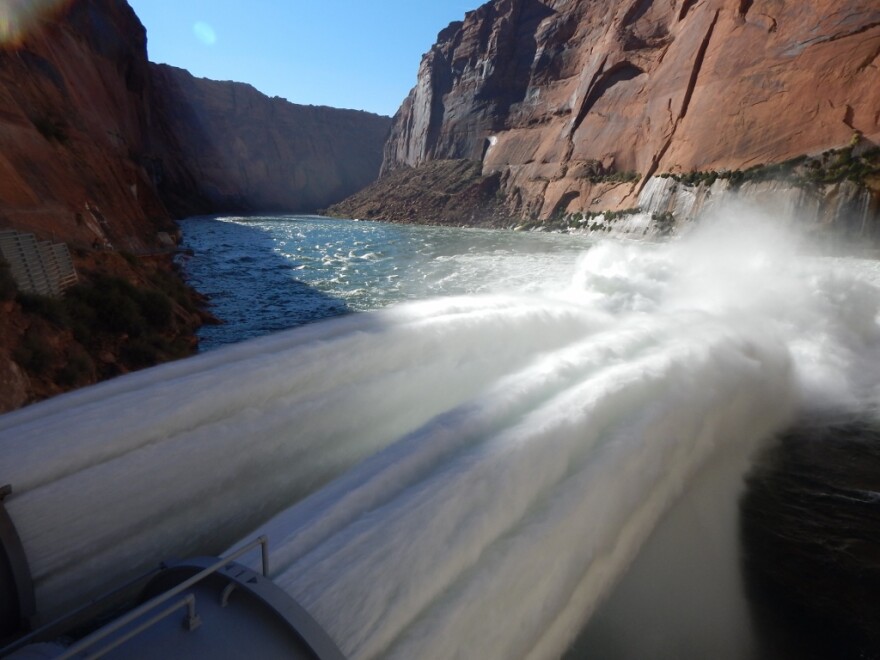The Grand Canyon is running short on sand. Sediment that once washed down the Colorado River to form beaches is now trapped behind Glen Canyon Dam. For two decades river managers have released artificial floods to rebuild the beaches … but it’s not clear if the river has enough sand for these experiments to work in the long run. That’s what scientists want to find out.

Enormous floods once thundered through the Grand Canyon, but that’s a rare sight these days. So there’s a lot of excitement as a crowd gathers at the base of Glen Canyon Dam. A massive tube cranks open and water gushes out. The calm river begins to churn.
“There’s a mist over the river, it’s really truly awesome to see,” says Katrina Grantz of the U.S. Bureau of Reclamation. She helped plan this four-day flood. It’s like watching an Olympic-size swimming pool empty into the river every two and a half seconds.
“The more water that we can get out, the more sediment that’s stirred up, and the more we can rebuild those beaches,” Grantz says.
Beaches in the Grand Canyon are vital for plants and wildlife, and for people who need places to camp. When Glen Canyon Dam was completed in the sixties, those beaches began to vanish. Scientists thought controlled floods, or “high flow experiments,” might fix the problem.

Rob Billerbeck, Colorado River Coordinator for the National Park Service, says the first attempt in 1996 was only a partial success. “At that time, they thought just running the high flow would pick up sediment off the channel bed and redistribute it,” he explains.

Turns out, there wasn’t enough sand. It’s all stuck behind the dam. Billerbeck says they learned it’s best to flood the river just after tributaries dump a bunch of fresh mud in the Colorado. “That really maximizes it,” he says. “That way the water that’s moving downstream, that wave of water, will pick up the highest concentration of sediment to redistribute.”
For decades scientists have rafted the river before and after these events, measuring sandbars and the silt suspended in the water. This is the seventh high flow experiment.
Paul Grams, a hydrologist at the U.S. Geological Survey, pulls up a photograph taken before the flood. It shows a thin layer of sand along the shoreline. “And then the photo taken immediately after the high flow shows a large bare sandbar sticking out into the river channel,” he says.

That’s just what he wants to see. But Grams says there’s a problem: “At least 80 percent or more of the sand is below the water.”

It’s tough to measure sand in this unseen world. That’s the only way for scientists to know if controlled floods will continue to work, years or decades from now. It’s like checking your bank account, says Matt Kaplinski, a geologist at Northern Arizona University.
“You’ve got to have sand in the bank to build the sandbars,” Kaplinski says.
Kaplinski and his colleagues use a sonar instrument to bounce sound waves off the bottom of the river. They use the data to make color-coded elevation maps that reveal deep pockets of sand and stretches of bedrock.
“You map it once and several years later you map it again and you compare those two surveys and you look at the change in bed elevation,” he says. “And you can determine what’s been eroded and what’s been deposited. Figuring out how the river works is a pretty lofty goal.”
But it’s a goal that’s changing the way the river is managed. The U.S. Bureau of Reclamation just signed a plan to continue the experimental floods for another 20 years.









